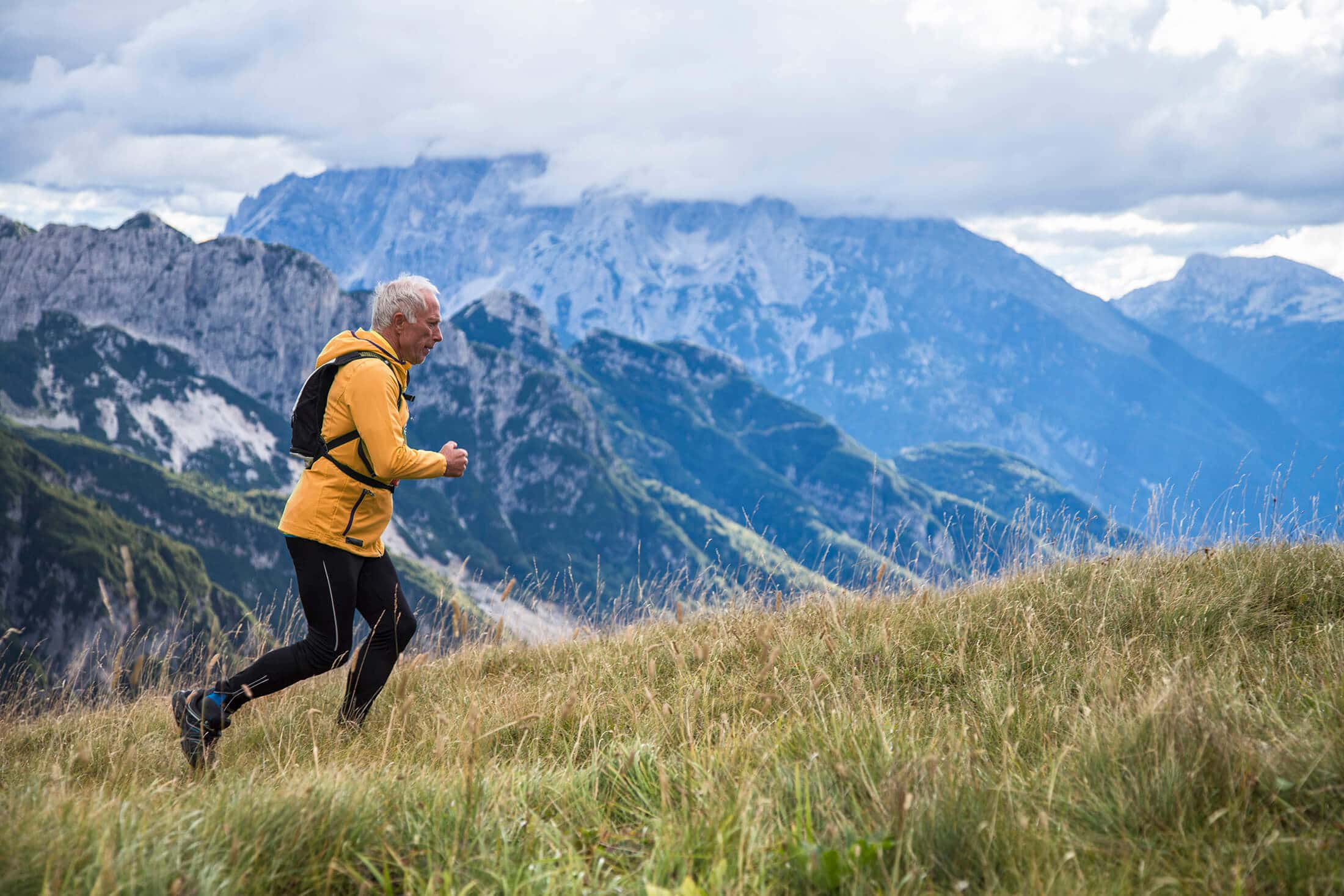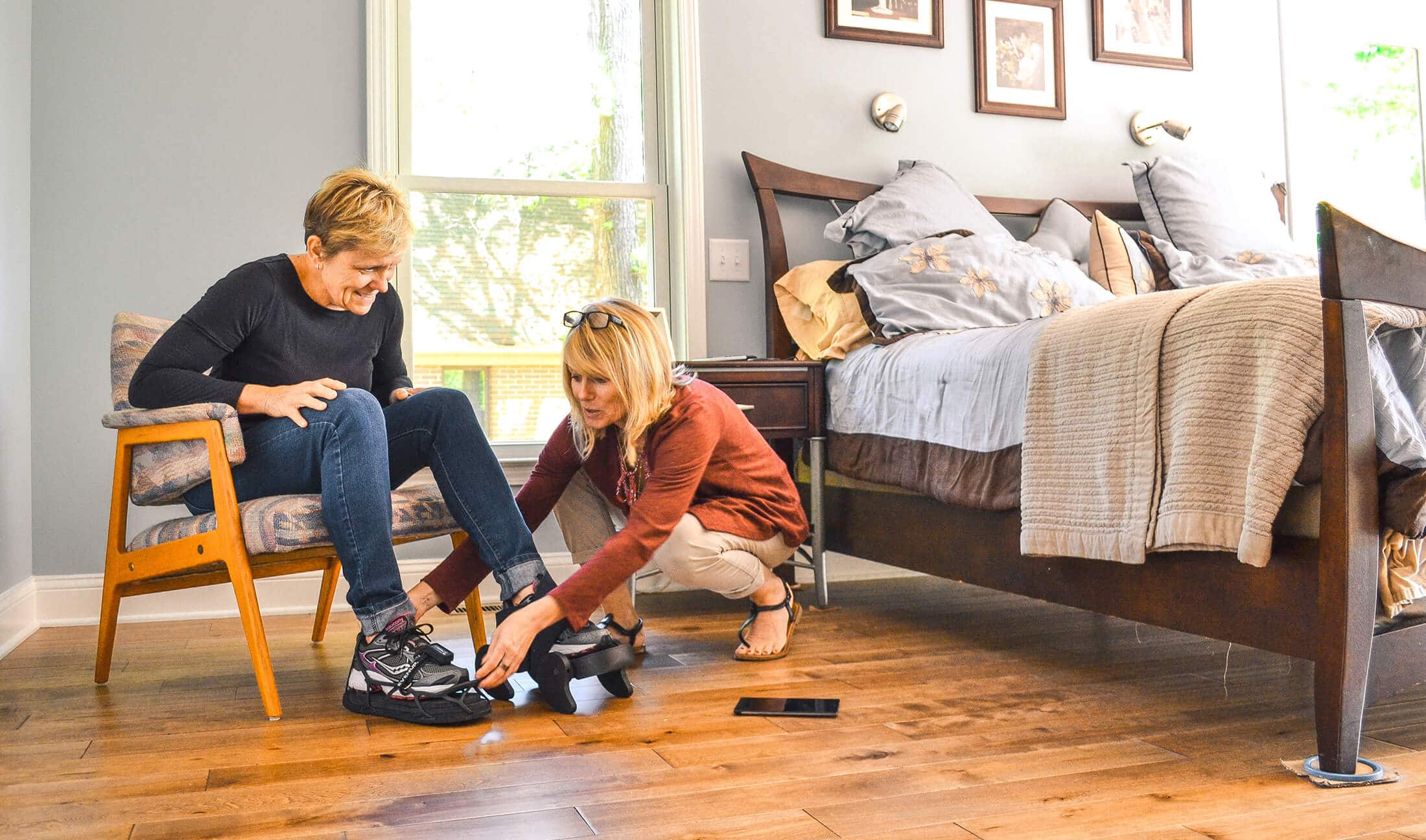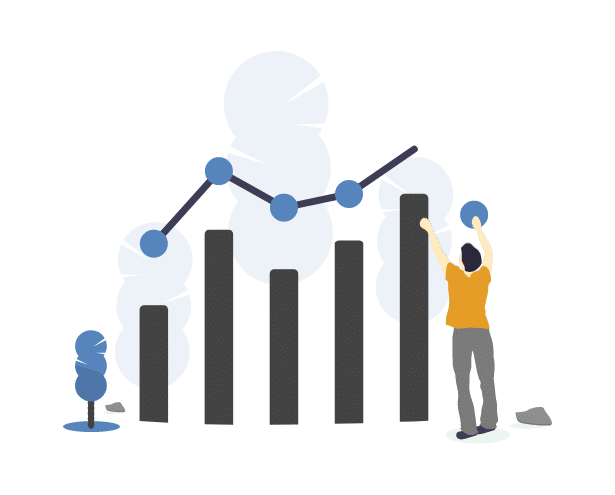Breaking Through a Recovery Plateau
by Brie Darcy, PT, DPT.
What Is a Recovery Plateau? If you or a loved one has experienced a stroke, there’s a good chance you’ve heard of the dreaded recovery plateau. Simply defined, a plateau is a state of little or no change following a period of activity or progress. In the context of stroke recovery, this stage can make survivors feel as though their recovery has slowed or even stalled out. While this can be frustrating for those experiencing it, we now know that plateaus are expected and a very normal process during rehabilitation.

What We Know About Plateaus
Years ago, many researchers believed that recovery after stroke was mostly limited to the first 6 months. When survivors reached a plateau, it was believed that this represented the end of the recovery period and that therapy services should be discontinued. Thankfully, a number of recent research studies showing strength and mobility gains many years after stroke have shown us this is not fully the case!1,2
We now know that stroke recovery, like many other growth processes, occurs in a complex and non-linear way. In other words, there are periods of rapid change as well as periods of slowing or plateauing. Plateaus are actually a very common phenomenon, frequently experienced in other realms such as weight loss or learning a new skill. In fact, research conducted in 2004² indicated that the tendency to plateau is a normal response to any exercise regime. Further, these researchers suggest that the recovery plateau in stroke may simply reflect a process called neuromuscular adaptation (meaning your body has simply adapted to the current rehabilitation regime). Similar to a body builder who needs to increase his weights to get stronger, this process of adaptation may signal it’s time for a change in your rehabilitation program or, better yet, a new challenge.
Moterum Technologies is Here to Help!
Instead of becoming frustrated when a plateau occurs, look at it as an opportunity! A time to try something new! Our Moterum iStride Solution™, developed to help stroke survivors improve their gait and mobility, has been clinically proven to help stroke survivors achieve meaningful gains many years after believing their full mobility potential had been reached. In fact, in our clinical trials we have been able to help individuals make significant functional gains even 25 years after a stroke! Our patented iStride device can be used as a stand-alone treatment or as an adjunct to traditional therapy. With the ability to be used at home, with your caregivers, at a time that is convenient to you, the iStride Device™ can be used to provide a new, novel challenge that can jumpstart your recovery and help you push through this plateau.

7 Tips for Breaking Through a Recovery Plateau
1. First, determine whether you are actually plateauing.
Be sure that you are using accurate, measurable ways to monitor your progress. The Moterum iStride Solution™ has progress monitoring built in to the system. With the ability to track number of steps, gait speed, stride variability, symmetry, and more, you can accurately and easily track your goals.
2. Stay motivated!
Studies show that high motivation is a predictor of good therapy results. Focus on small wins. Remember, it is normal for progress to fluctuate! Stay patient and celebrate how far you’ve come.
3. Make training a priority, or better yet, a habit!
You may have heard the quote “motivation is what gets you started; habit is what keeps you going.” To create a habit, we recommend:
- Stick to a regular schedule. Consistency is key when establishing a habit. If possible, try training at the same time and place each day.
- Enlist support of family or friends. Loved ones can help keep you motivated and accountable for your goals. Spending time with people whose habits you admire can have a positive impact as well.
- Set reasonable and measurable goals. Change doesn’t happen overnight, but progress is progress, no matter how small. Maybe you can walk a few more steps today than yesterday or walk across the room one second faster than last week. Even if the changes are small, they are worth noting and celebrating!
4. Consider participating in a clinical research trial.
Researchers and clinicians are constantly working to improve the recovery process after a stroke. Participation in these trials may give you access to ground-breaking technologies or improved rehabilitation techniques. To be considered for one of our future clinical trials, visit our clinical trials page at https://moterum.com/clinical-trials/
5. Join a support group.
Navigating life after suffering a stroke can be difficult, for both stroke survivors and their loved ones. Support groups can enable survivors to share stories and tips, encourage each other, and build friendships. The American Stroke Association provides resources on their website to locate stroke support groups in your community. Visit https://www.strokeassociation.org/en/strokesupport-group-finder.
6. Try something new – remember, a plateau can be an opportunity!
Consider:
- Changing up your rehabilitation program. If some of your treatments no longer challenge you, it may be time to modify them. Consult with a physical therapist for assistance with this, if needed.
- Adding to your rehabilitation program. A plateau could signal that your body is ready for a new challenge. Using the Moterum iStride Solution™ at home can be an excellent addition to a traditional rehab program.
- Adjusting the intensity or duration at which you perform your program. Modifying these parameters can help jumpstart your recovery.
7. Let us try to help!
Interested in learning more about the Moterum iStride Solution™? Visit us at moterum.com
1. Demain S, Wiles R, Roberts L, McPherson K. Recovery plateau following stroke: fact or fiction? Disabil Rehabil. 2006;28(13-14):815-821.
2. Page SJ, Gater DR, Bach YRP. Reconsidering the motor recovery plateau in stroke rehabilitation. Arch Phys Med Rehabil. 2004;85(8):1377-1381.
